How to Fix an iPhone Camera Blinking/Flickering Issue
If your iPhone’s camera exhibits a flickering effect, you may face challenges capturing clear photos or videos. This flicker may present itself as a rapid shutter movement or a screen anomaly, which might induce blurriness in images or video recordings. Additionally, flickering can be intermittent or persistent, impacting either the default Camera app or third-party applications such as Instagram, and may affect front and back camera functionality across various iPhone models.
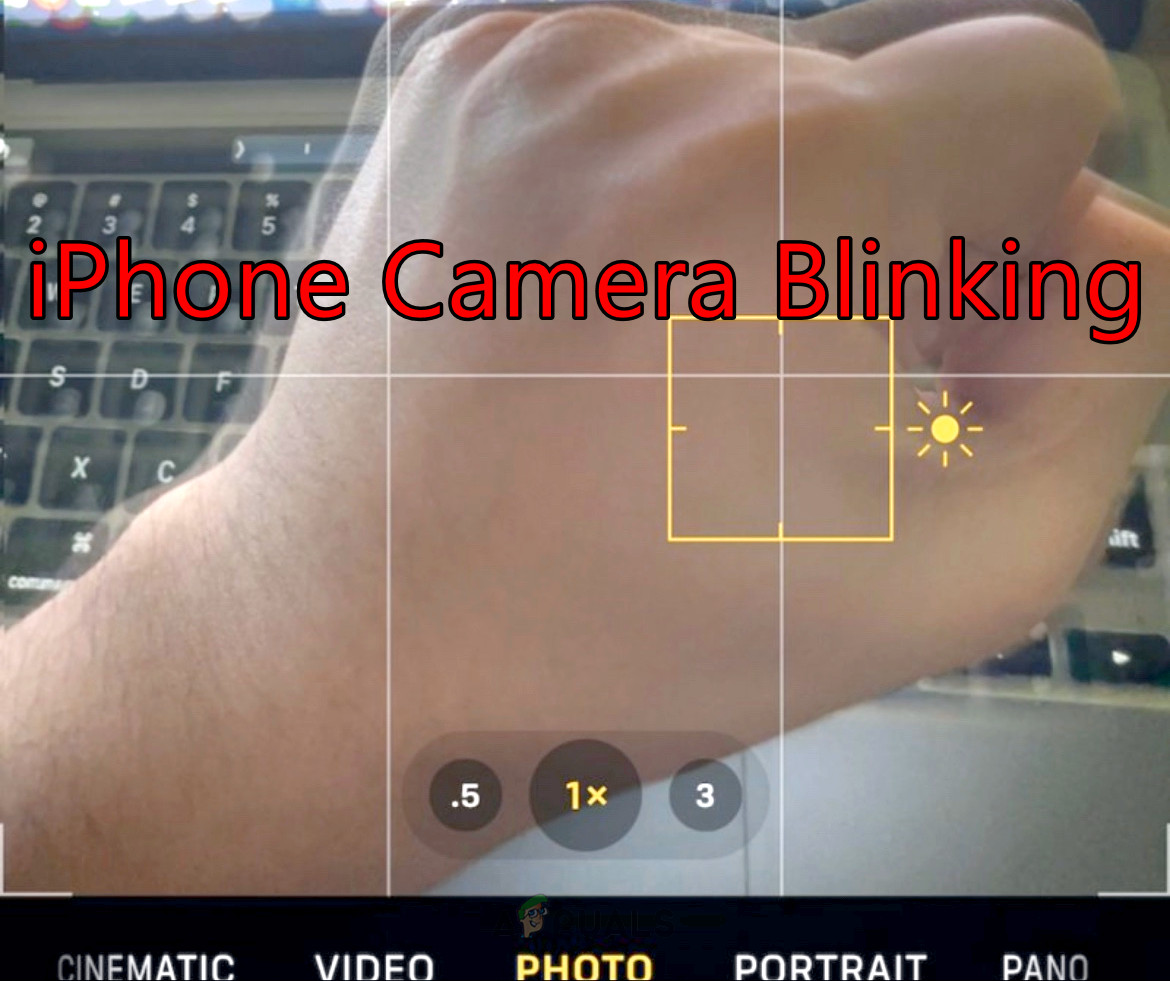
Troubleshooting Prerequisites
- Ensure the camera is not zoomed in as this can amplify camera movement and lead to perceived flickering.
- Modifying lighting conditions may help identify flickering issues, as certain types of lights, like LEDs, operate at frequencies that can interfere with the camera sensor. Experiment by moving to a different room or going outdoors.
- A brief flicker may occur upon launching the Camera app as it auto-adjusts to lighting conditions; however, persistent flickering is not normal and may indicate an issue.
- It’s typical for the camera to flicker when pointing at an electronic screen due to the refresh rate of the screen, which, again, should not be persistent.
Basic Troubleshooting
- Remove any case, film, or accessory that could interfere with the camera’s functionality.
- Relaunch any apps where the camera flickers, such as Instagram.
- Try accessing the Camera app through the Lock Screen or Control Center to see if the flickering persists and use this as a temporary workaround if successful.
- Perform a Restart and Force Restart of the iPhone.
- Make sure to update both the Camera app and the iOS software on your iPhone.
1. Clear the iPhone’s RAM
Excessive background processes can slow down your device and may affect camera operation. Although clearing RAM is not a standard resolution for camera issues, some users may find it helpful.
- Navigate to Settings > Accessibility > Touch > Assistive Touch and enable it.
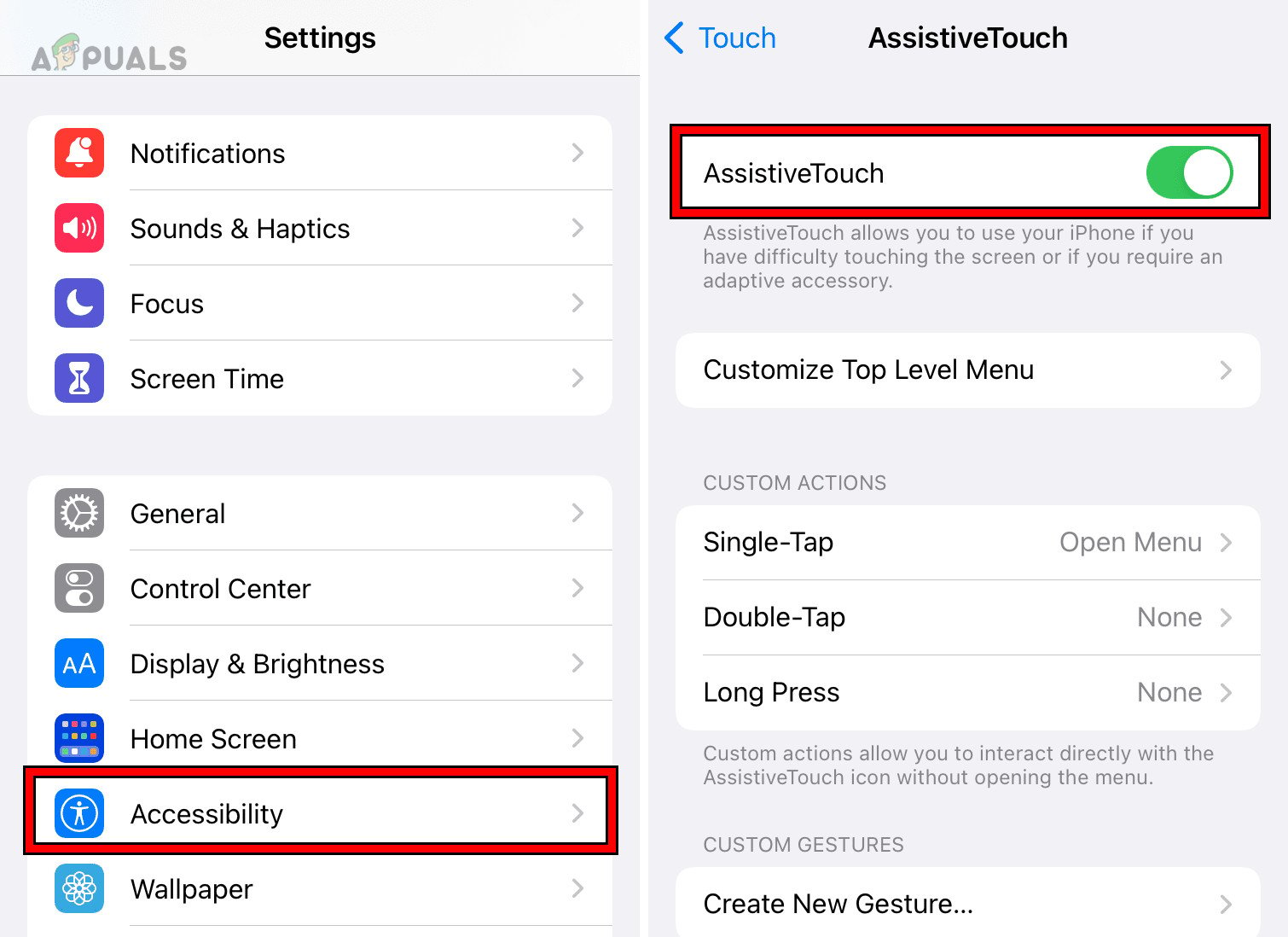
Enable Assistive Touch on the iPhone - Go to Settings > General > Shut Down.
- On the power off slider screen, tap on the Assistive Touch icon and press the Home button. This process is rumored to clear the RAM.
- After restarting the iPhone, open the Camera app to test if the issue persists.
2. Disconnect the AirPods or Disable Bluetooth
There are anecdotal reports that suggest Bluetooth connections might impact camera performance, although this is not a documented issue.
- Go to Settings > Bluetooth.
- Tap on the Info icon next to your AirPods and select Forget This Device.
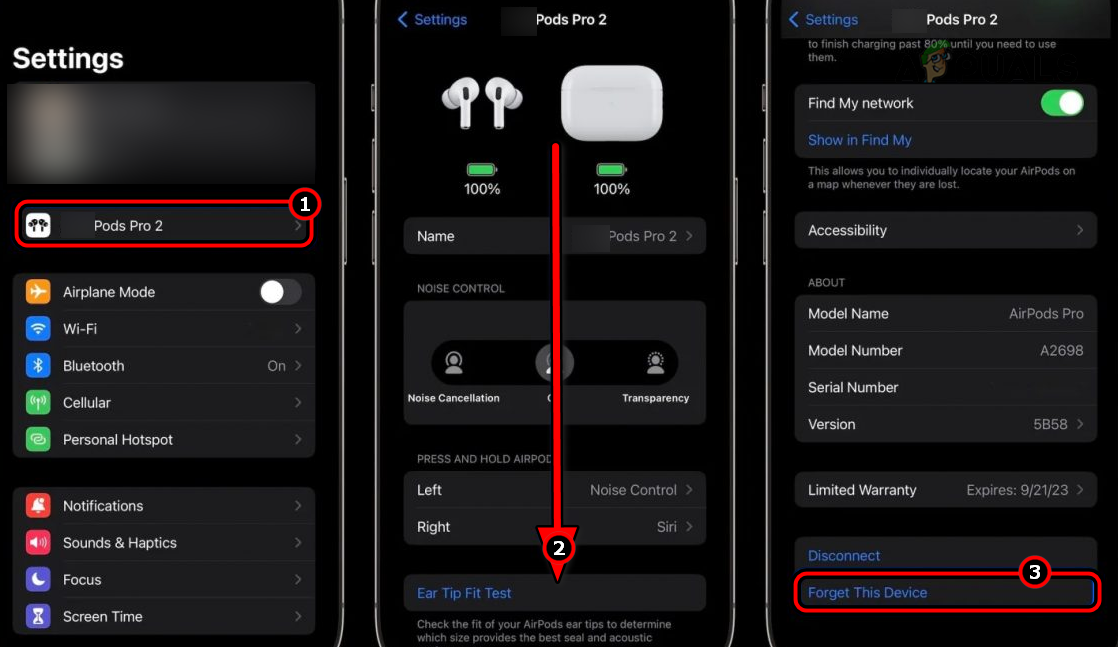
Forget AirPods Pro in the iPhone Settings - Restart your iPhone and observe if the camera performance improves.
- If necessary, disable Bluetooth from Settings > Bluetooth and restart the device again.
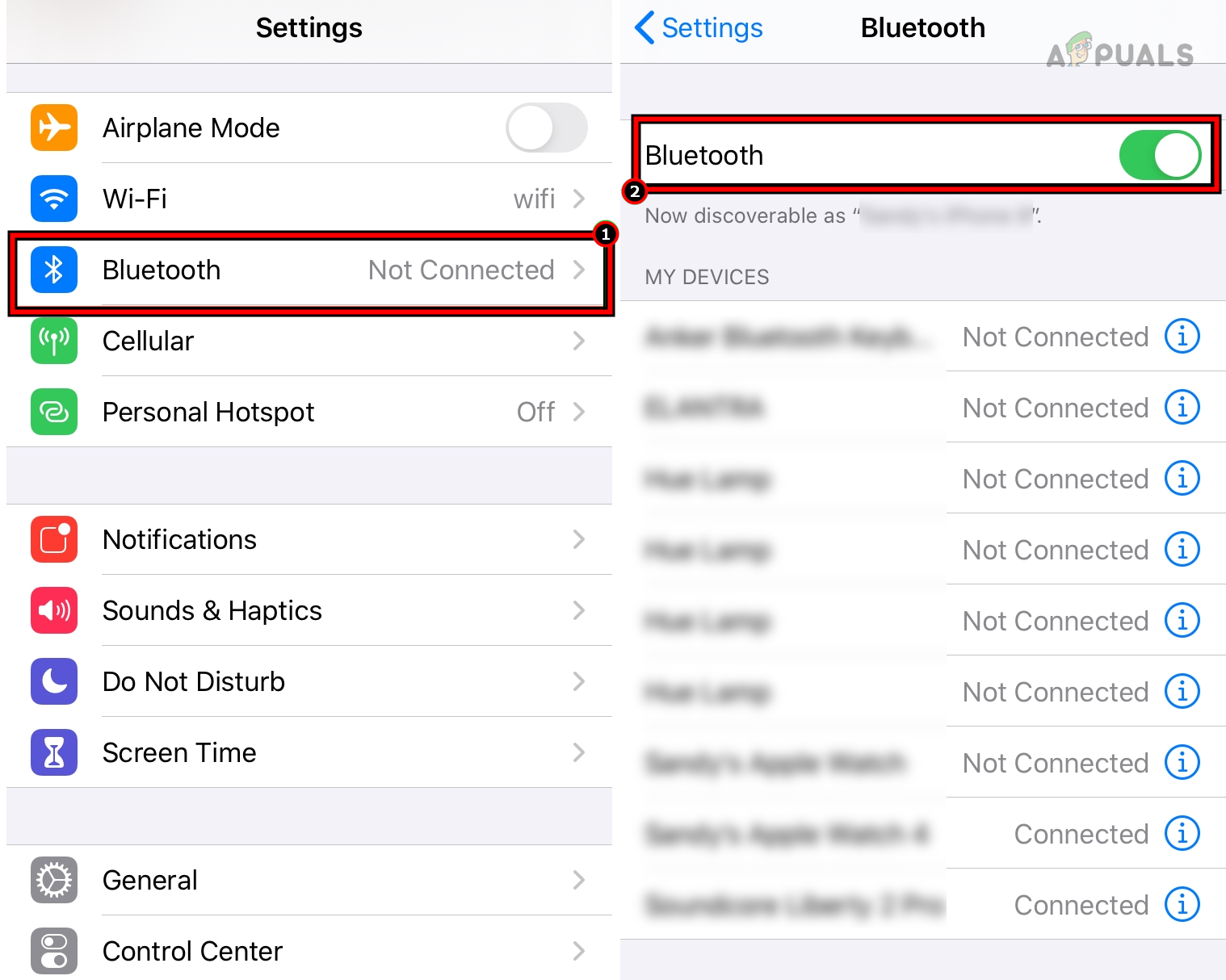
Disable Bluetooth in the iPhone Settings
3. Disable Night Mode or Deep Fusion on the iPhone
Movement during long exposure in Night Mode or processing in Deep Fusion can cause flickering. Disabling these features may improve stability.
Disable Night Mode
- Access Settings > Camera > Preserve Settings.
- Turn off Night Mode, restart your device, and check if the issue is resolved.
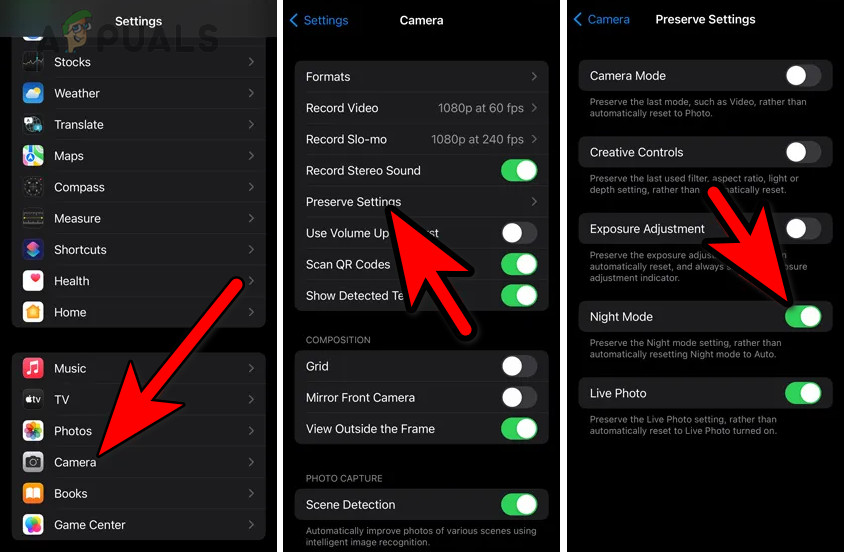
Disable the Night Mode on the iPhone
Disable Deep Fusion
- Navigate to Settings > Camera.
- Deactivate Photos Capture Outside the Frame and restart the iPhone to see if the flickering stops.
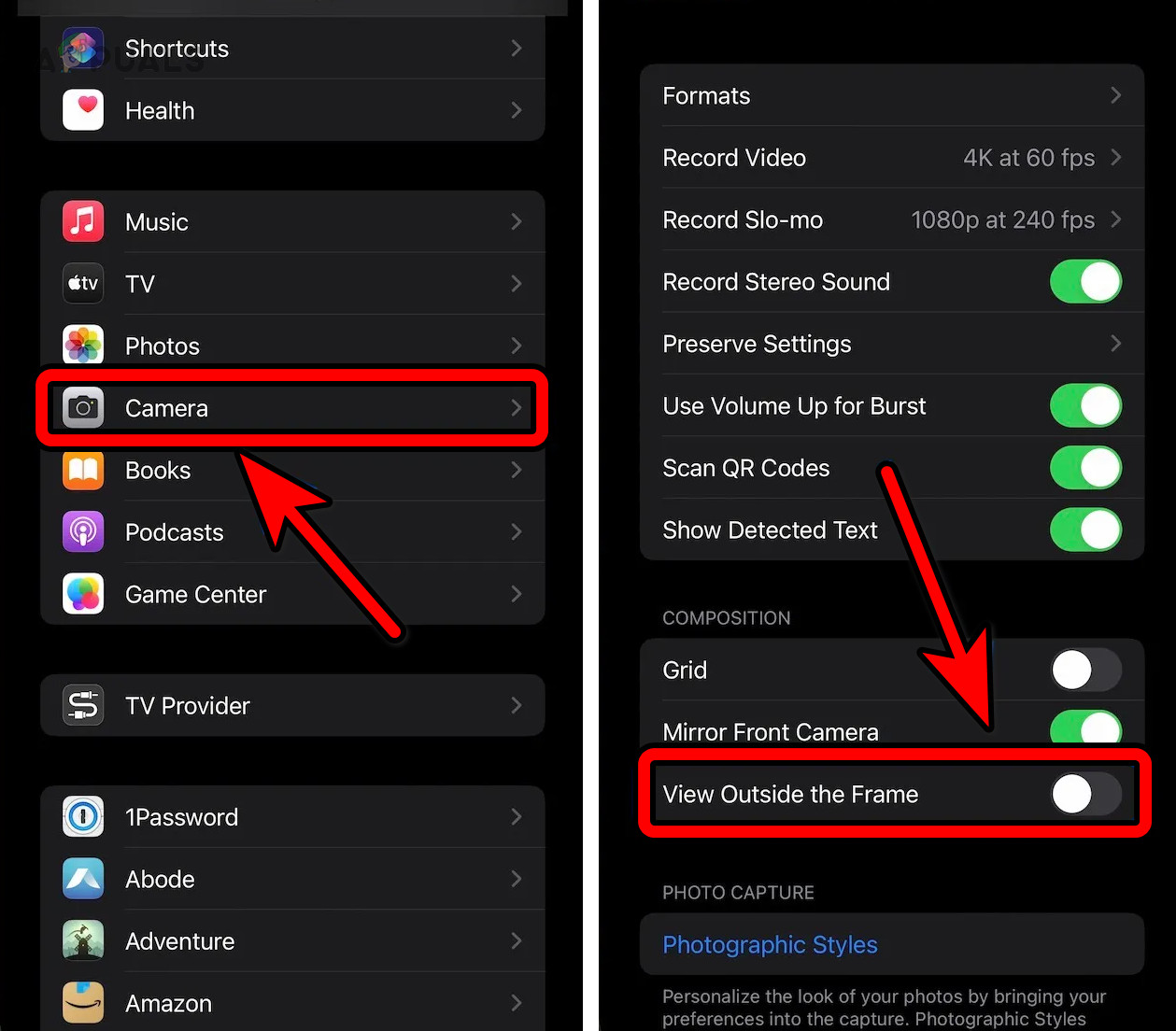
Disable Fusion Mode on the iPhone
4. Disable Macro Mode in the iPhone’s Camera Settings
Transitioning between camera lenses in Macro Mode can lead to flickering. Disabling this feature might help mitigate the issue.
- Within Settings > Camera, locate and turn off Macro Control, then restart your iPhone.

Disable Macro Control on the iPhone - Reopen the Camera app to see if the flickering persists. If necessary, toggle Macro Control back on and assess its effect.
5. Adjust the Camera Exposure
Incorrect camera exposure can cause flickering as the camera tries to adapt to the light. Adjusting the exposure might help.
- In the Camera app, select the Photo mode.
- Adjust the Exposure setting to a lower level such as -0.7 and observe any changes.

Adjust the Camera Exposure on the iPhone
6. Match Video FPS to Light Frequency
Misalignment between the camera’s FPS and artificial lighting frequency could cause flickering. Adjusting the FPS could resolve this.
- Visit Settings > Camera > Record Video.
- Choose a frame rate, such as 4K at 30 FPS, honoring the power supply standard of your location, be it 50Hz or 60Hz, and restart the iPhone.
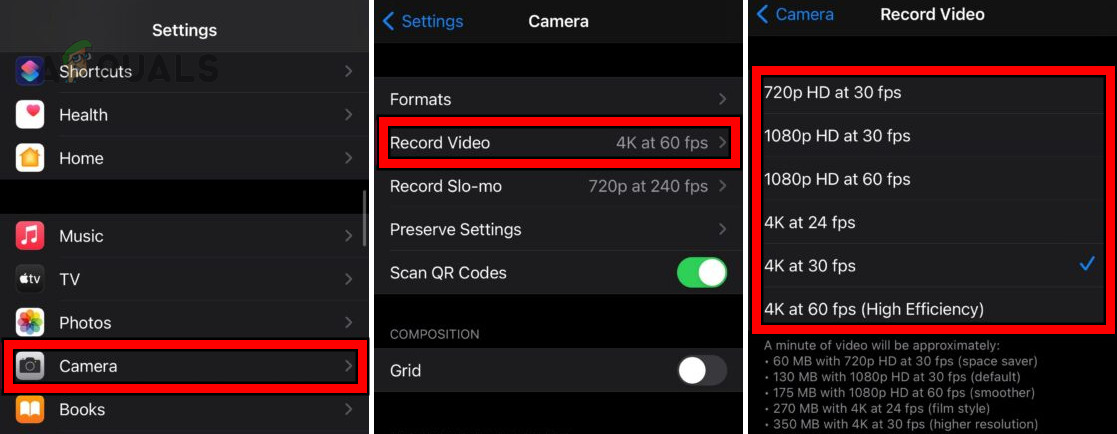
Change the iPhone’s Camera FPS to 4K at 30 FPS
7. Lock Camera Settings
Disabling automatic camera switching in variable lighting might prevent flickering but consider how this affects auto-exposure and white balance.
- Go to Settings > Camera > Record Video.
- Activate Lock Camera, and restart your device.
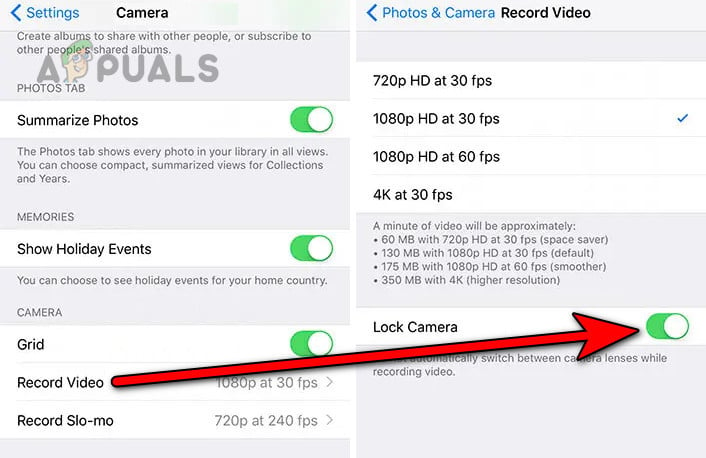
Enable Lock Camera in the iPhone Camera Settings - Open the Camera app again to test the adjustment. If issues persist, revert to default settings and consider altering PAL/NTSC settings.
8. Reset All iPhone Settings
If an incorrect setting is causing camera flickering, a reset to default settings may be necessary. Always back up important configurations before proceeding.
- Go to Settings > General > Reset > Reset All Settings.
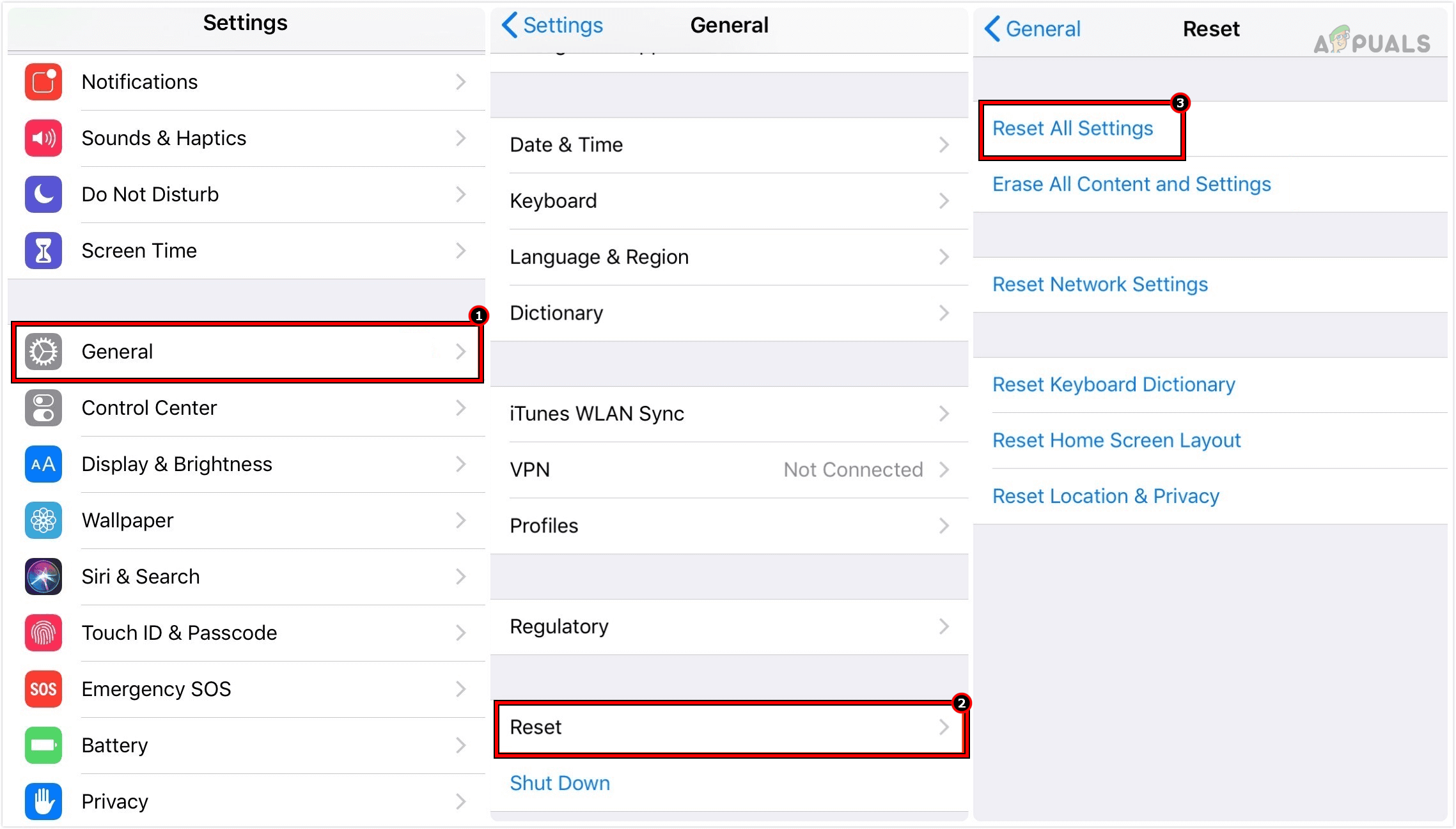
Reset All Settings of iPhone - After resetting, check if the flickering is resolved.
Further Troubleshooting
- Consider a factory reset if problems persist.
- Contact Apple Support for further assistance–if under warranty, inquire about a replacement. In the meantime, third-party camera apps may serve as alternatives.





